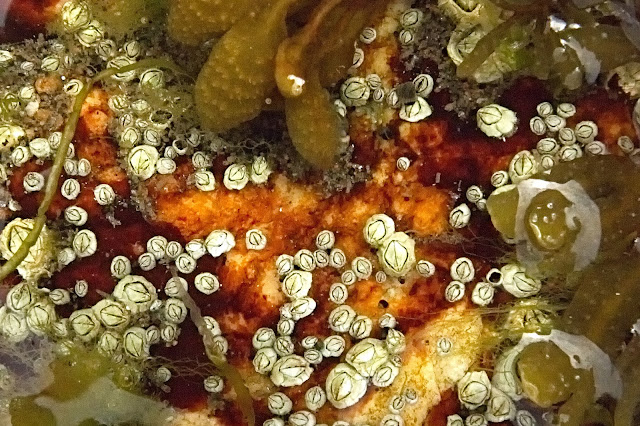 |
| Drew gets some tips from Tony as to how to read the apple tree availability map for the orchard. |
Orchard Name: One of Tony's grandmothers was named Hazel. And, coincidently, one of Jamela's grandmothers was named Hazel as well. So, hence the name Hazel Hill Orchard.
The original orchard (about 200 acres?) was in full swing from the 1970s to about 2002, I believe. Then, a large chunk was sold off, and the remaining 3 acres was left, but not worked. Grape vines and other plants smothered the trees over time. Tony moved back to the area a few years ago and decided to get the remaining 3 acres producing again. In the photos above, you can see the brush pile of vines that covered a small section of trees that were "uncovered" so to speak.
First, we picked one McIntosh tree for the Maine Project Learning Tree silent auction (to be held at Maine Audubon in Falmouth, on Sept. 14th) which Tony generously donated, to help us fund all the workshops we provide for teachers around the state. This tree has ginormous apples! It is a 3 bushel tree. It is labeled and ready for the highest bidder of the "Healthy Mainer" basket that I am assembling;-)
Then, we chose our Cortland Apple tree for picking (in early October.) Her name is Amelia. I think that Amelia's apples will be absolutely yummy! By the way, Neighbor Carla is going in with us on the apples.
Tony and I had to pose in front of the tree. I have the best friends. "Yay" to Apples!
We were treated like royalty and got to meet Tony's 92 year old mother, who is still gardening, canning, and taking care of her house. She was so gracious and gave us the history of the house and land. By the way, this was but one of several orchards owned by the Leavitt family, which goes back to Tony's grandfather.
Thanks Tony. We had a great visit and we can't wait to come back to pick some ripe apples within the next three to five weeks!

















































